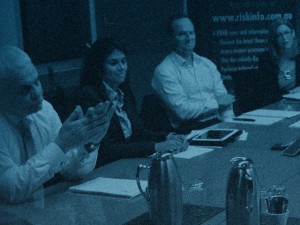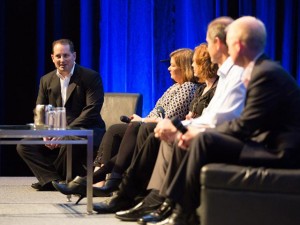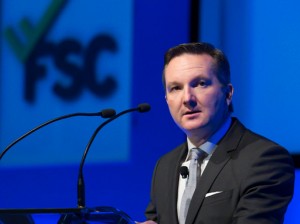While many advice businesses believe they are delivering great service to their clients, they are still failing to generate sufficient referrals to take their business to the next level. Founder and Director of The Customer Experience Academy, Cameron Brown, says the secret is to turn clients into ambassadors…
I speak to a lot of advisers, and many of them truly believe that they offer their clients a great service experience. When I speak to them they say: “My clients are happy”, or “I get great feedback in client surveys”, or “I’ve never lost a client”.
While I find that they generally do have good customer service practices, and their clients do like them, these advisers invariably say that they are not getting as many referrals from these clients as they would like.
A lot of the time, this is because the customer experience they’re delivering simply isn’t good enough.
Yes, they’ve got happy clients, and they’re happy to talk to their adviser about how satisfied they are. But to take the business to the next level, the adviser needs to get those clients to talk to others about how good their adviser is. That’s the level we want to get to, and it’s about a lot more than simply providing good customer service.
What are your clients saying about you?
Studies from around the world, across all kinds of industries, have shown that 80% of businesses believe that they provide superior customer service. But just 8% of their customers agree.
That is clearly a massive gap, and while advisers may believe their clients are receiving a good service, the only way to be sure is to ask them.
A number of businesses do this by conducting customer surveys. These are often done online, with a small number of questions designed to identify how satisfied clients are with the services on offer, and inviting them to comment on any areas they feel the business could improve upon.
While surveys are valuable, to be able to deliver an outstanding customer experience – the kind that turns clients into ambassadors and drives referrals – you need to take this one step further.
You need to understand what your clients are currently thinking and feeling when they deal with you and your team, and what they want to think and feel as a result of doing business with you. I recommend that you to create what’s called a Customer Journey Map, which captures each and every touchpoint with the client, as well as the thoughts and emotions they experience at each step. A great way to start this process is to interview your clients one-on-one. If you don’t get that kind of depth of understanding about your clients’ experience, then you’re just going to be guessing as to the areas in which you need to improve.
“But I have hundreds of clients – I don’t have time to do this with everyone!”
The good news is that you don’t have to conduct a customer experience interview with every single client. Instead, you need to identify your ‘ideal client’. What are their attributes? Why do you like working with them? Once you’ve worked out who your ideal client is, use their profile to determine a sample of people from your client base to interview. You may find it valuable to have someone external to your business conduct these interviews so that the client feels more comfortable expressing their experience fully, instead of just filling you in on the parts that are already working well.
Through this process you will find there are some elements that are entirely specific to the individual, but you will also get an overarching view of what your ideal client needs, thinks and feels, and that’s what you can use to shape your service. (You’ll also find that you then start to attract more of your ideal clients to your business.)
The Hierarchy of Experiences
All decisions are based on emotions. Every single touchpoint is the adviser’s opportunity to wow their client in a way that has them taking another emotional step on the journey to becoming an ambassador. Every touchpoint that doesn’t do this moves them away from this goal.
If all you’re doing at each point is simply keeping them satisfied, or even making them happy, then they’re not going to move further along the path to becoming an ambassador. If you’re only delivering a satisfactory experience, then you’ll struggle to generate the referrals you want because your clients won’t be instigating the conversation about how great your service is.
No one is ever going to say to their friends: “Guess what? I just had a satisfying experience, I must tell you all about it!”
This leads us to the model I’ve developed called the Hierarchy of Experiences.

Let’s start at the bottom, with the Venter. This is a client who has an experience that is much worse than they expected. They are likely to be angry, and will want to vent their frustration, perhaps on social media, or to their friends at work, or even to other parents standing on the sideline of their children’s sporting match! And they will say: “Don’t ever go to this place!” Ideally you would hope never to have any clients in this position.
The next level, the Retreater, is someone who gets less than they expected from the service. They won’t return to you in the future, and they may not even tell you that they were dissatisfied – they’ll just disappear. While less likely to volunteer their experience with their friends and family, if anyone asks, they’ll say: “I wouldn’t go there if I were you”.
The third level is the Alternator. They’ll get what’s expected from the service, and nothing else. Their experience is totally neutral. This means they’re more likely to alternate between you and someone else. For example, in the case of an adviser, they might get insurance from one financial advice provider, but then get their super advice through their fund. If somebody asks them, they’ll say: ‘You could go there, or you could go somewhere else as well’.
Moving towards the top of the pyramid, we come to the Follower. This person receives a little more than expected. They are going to return to you, but deliver less than expected the next time and they won’t stick around for long. You may see some referrals come from this level, but only if they’re asked.
If you can take your service to the next level, you’ll have someone who is completely loyal to your brand, and they’ll be a lifelong client. And if anyone asks, they’ll say: ‘Yes, you should definitely go there. I’ve been going there for a long time, and I wouldn’t go anywhere else’.
But they still haven’t reached the Ambassador level. This is where the referrals really start flowing. This is about delivering the unexpected. This is anticipating their needs, before they do, because you know your clients better than they know themselves. Personalised experiences are what is key here. If you get to that level, where you’re delivering not only what your clients want but the unexpected as well, then they’ll say: ‘You must go there!’
Ambassadorship only comes from understanding your clients and their emotions and feelings, and designing a customer experience around what you want them to think and feel at each point in the process.
For each individual touchpoint, you need to sit down and determine:
- What the client needs
- What they need but don’t know they need
- What they will be feeling
- How you want them to feel
- What behaviour do you want them to display
- What people are involved in this step
Once you have that experience mapped out in your Customer Journey Map, you can start to put in place innovations to make sure your clients are moving further along the path towards becoming an Ambassador.
The Customer Experience Academy is hosting an online training session on how to make 2015 your most profitable year ever. Click here for more information and to register for this event.

Cameron Brown is the Founder and Director of The Customer Experience Academy, a mentoring program that helps business owners increase their profits and make a positive impact through delivering a world-class customer experience.
Contact or follow the author: Telephone: 1300 67 27 23 | Website | Email | LinkedIn | Facebook

















